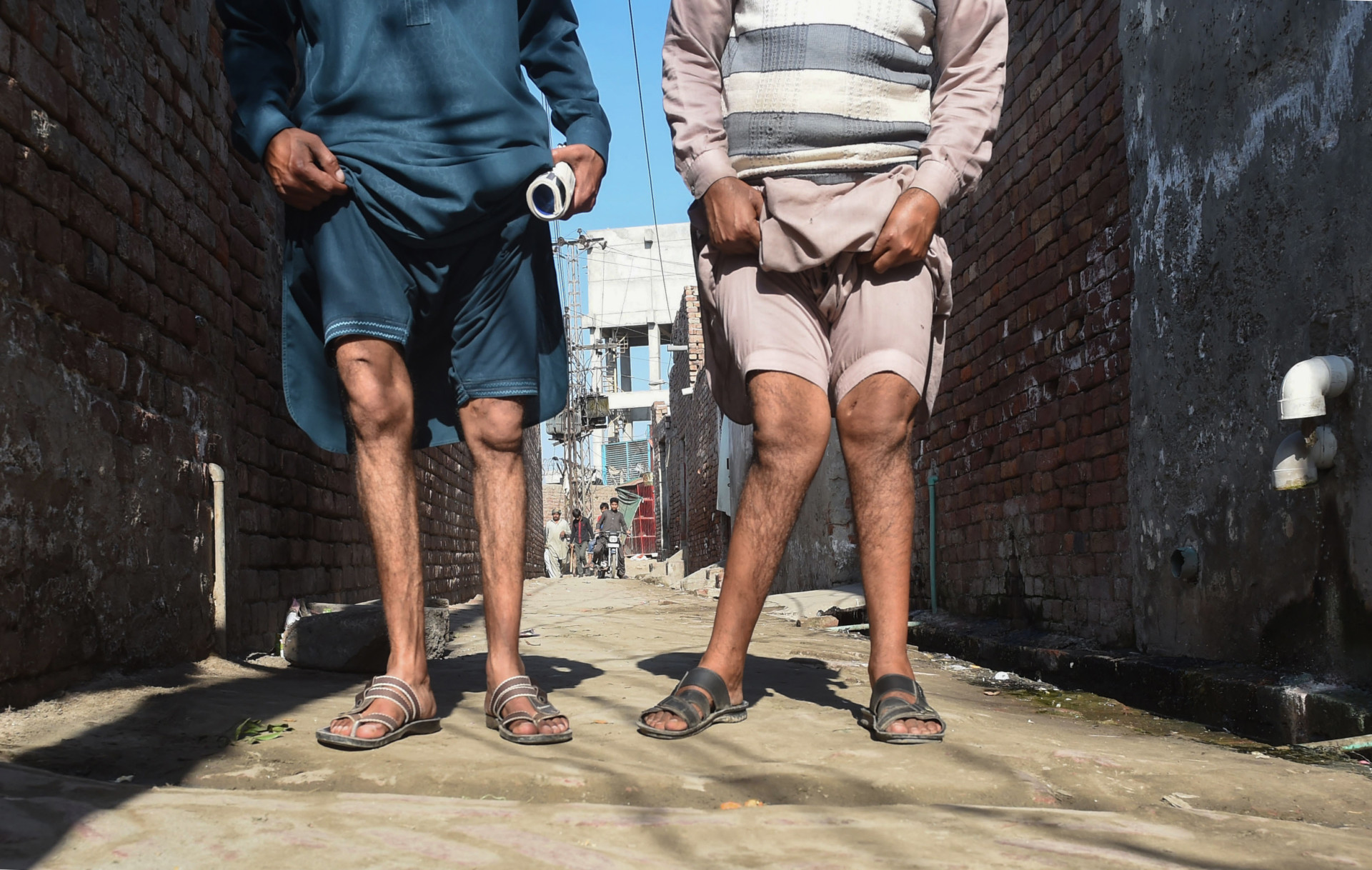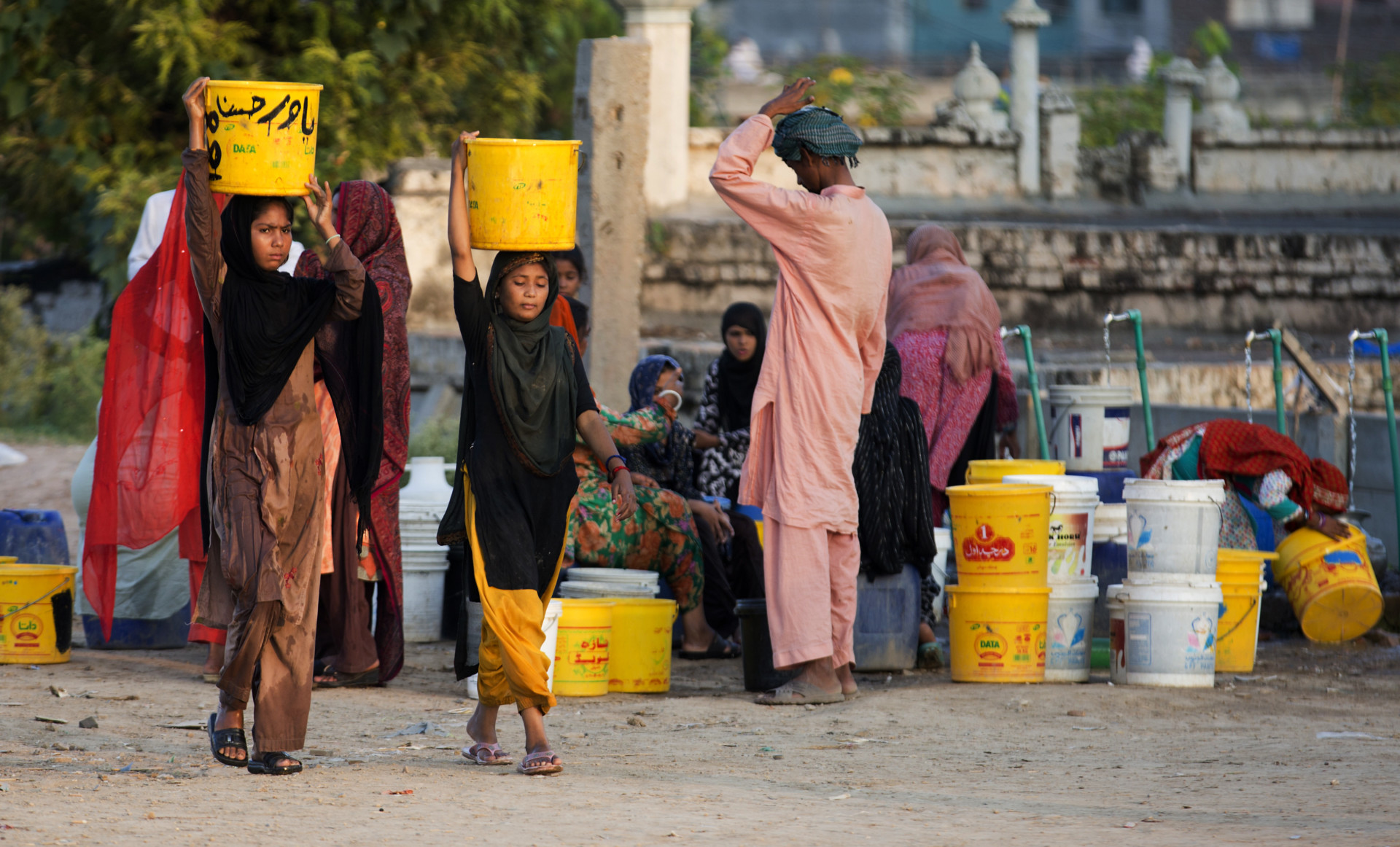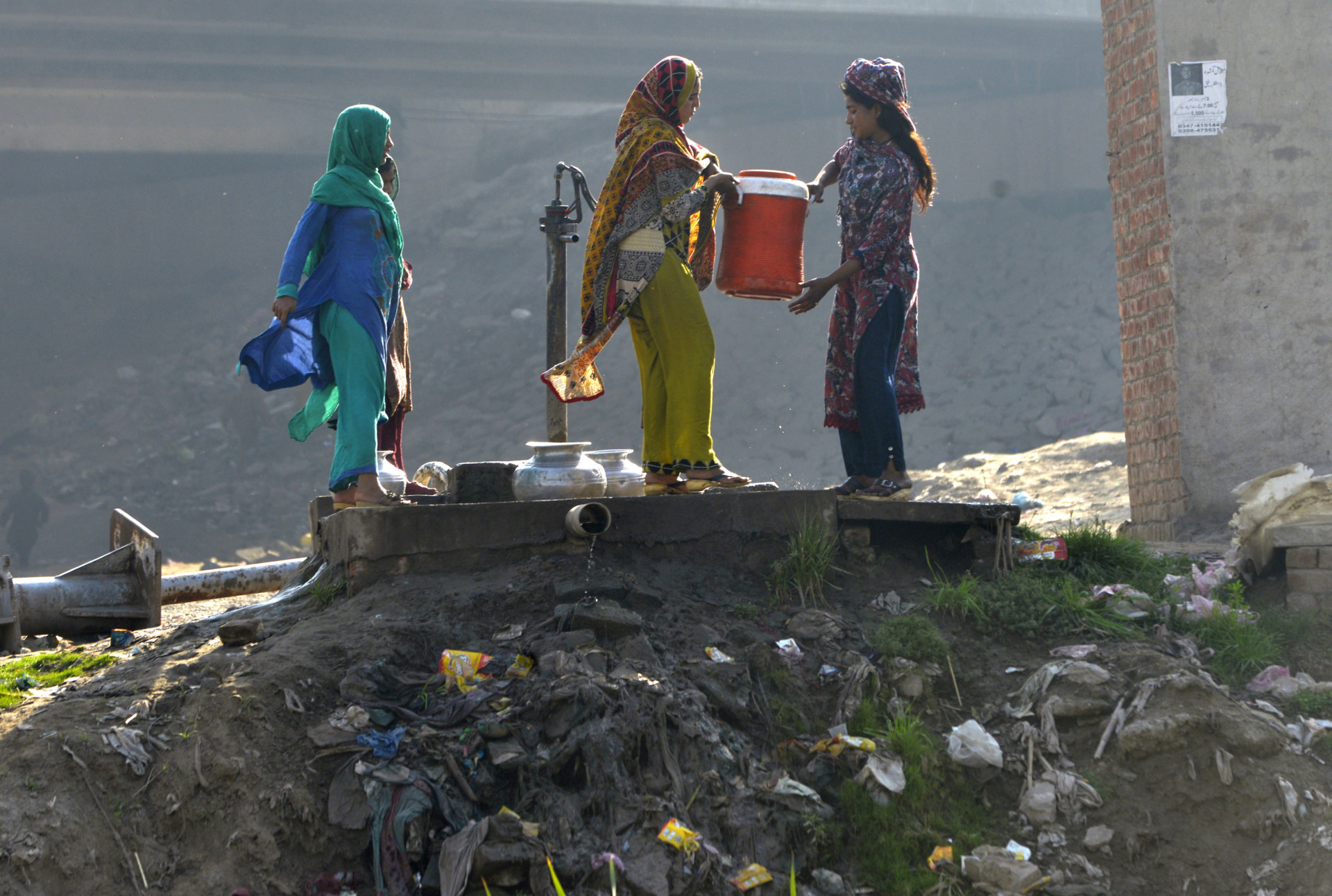According to a recent study of water supplies, more than 60 million people in Pakistan are at high risk from the deadly chemical arsenic found in the groundwater. Experts have said that long term exposure to this chemical can cause serious health conditions.
CGTN’s Danial Khan reports.
Follow Danial Khan on Twitter @DanialKublai
Arsenic levels are rising across Pakistan as people increasingly draw from the country’s underground aquifers, and the government is concerned.

People collect water at a tube well in Islamabad, Pakistan, Wednesday, Aug. 23, 2017. (AP Photo/B.K. Bangash)
“Yes water is a problem today, it is getting contaminated, arsenic levels are rising, and the needfuls are not being done. The clean drinking water is one issue today, the water of sewerage and disposal of that water is another issue, these are two serious issues because, lets be honest about what is happening, over a period of time…certain plannings which were required to be there are not there, towns are not planned accordingly, this is a mushroom growth all around, everybody is sitting where he wants to sit, and then drilling water out of the ground by tube wells, so a national water policy is required today.”
– Malik Muhammad Ahmed Khan, Government of the Punjab
Naiyan is a small village located some 60 kilometers away from Lahore, near the Pakistan-India border. It’s home to over 400 families, the village mostly relies on agriculture. Eighty-year-old Muhammad Sharif said the last decade has seen the physical health of villagers deteriorate.

In this picture taken on February 25, 2018, Pakistani residents Basharat Ali (L) and Naveed show their deformed lags allegedly caused by environmental factors and polluted groundwater in Kot Assadullah, around 45km from Lahore. (AFP PHOTO / ARIF ALI)
“There is no proper water supply system, the underground pipes are broken and it mixes with the open sewerage lines, we are forced to drink this dirty water, its smell is terrible.”
– Muhammad Sharif, Naiyan villager
Arsenic is a semi-metallic element found all over the world in varying concentrations. Humans come into contact with it as it leaches into groundwater from rocks and sediments. Health officials say there is no cure for arsenic poisoning.

In this picture taken on February 25, 2018, shows an elderly Pakistani woman who has suffered bone problems allegedly caused by environmental factors and polluted groundwater in Kot Assadullah, around 45km from Lahore. (AFP PHOTO / ARIF ALI)
“Cancer is for sure, and then there are other diseases also. This is a calamity, there are so many deaths, due to polio, due to cholera, due to typhoid, and hepatitis…figures are literally mind boggling.”
– Dr. Shahab Akhtar Kazi, National Institute of Health
The World Health Organization (WHO) considers arsenic concentrations above 10 micro-grams per liter to be dangerous. In Pakistan, the government says that 50 micro-grams per liter is acceptable. But villager Hazoor Hussain does not know what arsenic is. When asked, he said no government official has ever visited the village.

In this Tuesday, Aug. 22, 2017 photo, people collect water for their families from a tube well, in Islamabad, Pakistan, Wednesday, Aug. 23, 2017. (AP Photo/B.K. Bangash)
“The Roohi is a river of sewerage. It passes by our village, coming from Kasur and other cities. It is full of filth and no matter how deep we dig our wells, the water is always dirty. Most of the children in this village have hepatitis, and the elders suffer from cancer. There is no hospital nearby and we cant afford to take the sick ones to the cities. We are poor people.”
– Hazoor Hussain, Naiyan villager
Pakistan Council of Research in Water Resources has said that over 80-percent of the country’s population lacks access to safe drinking water, despite spending nearly 300 million rupees on the project called “Provision of Safe Drinking Water”.

In this picture taken on February 26, 2018, shows Pakistani residents filling their pots with drinking water from a handpump on the outskirts of Lahore. (AFP PHOTO / ARIF ALI)
The problem has become urgent for Pakistan, and poor villagers are the worst-affected. Experts have said that the government should immediately discourage the indiscriminate groundwater exploitation. It would be the first step to help prevent the situation from exacerbating.
 CGTN America
CGTN America

